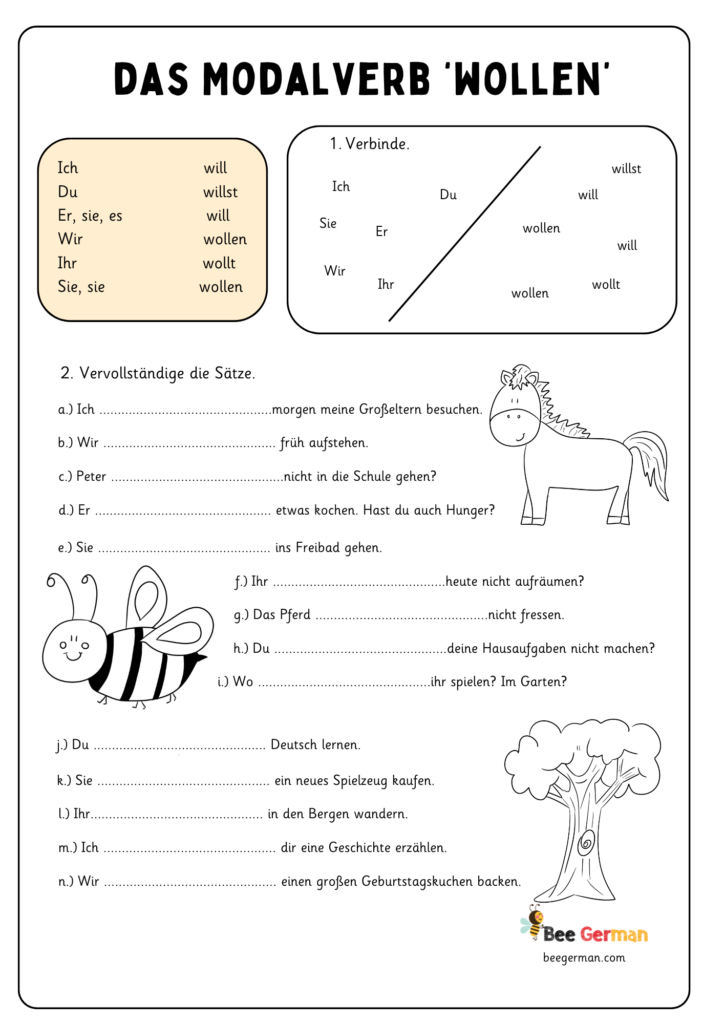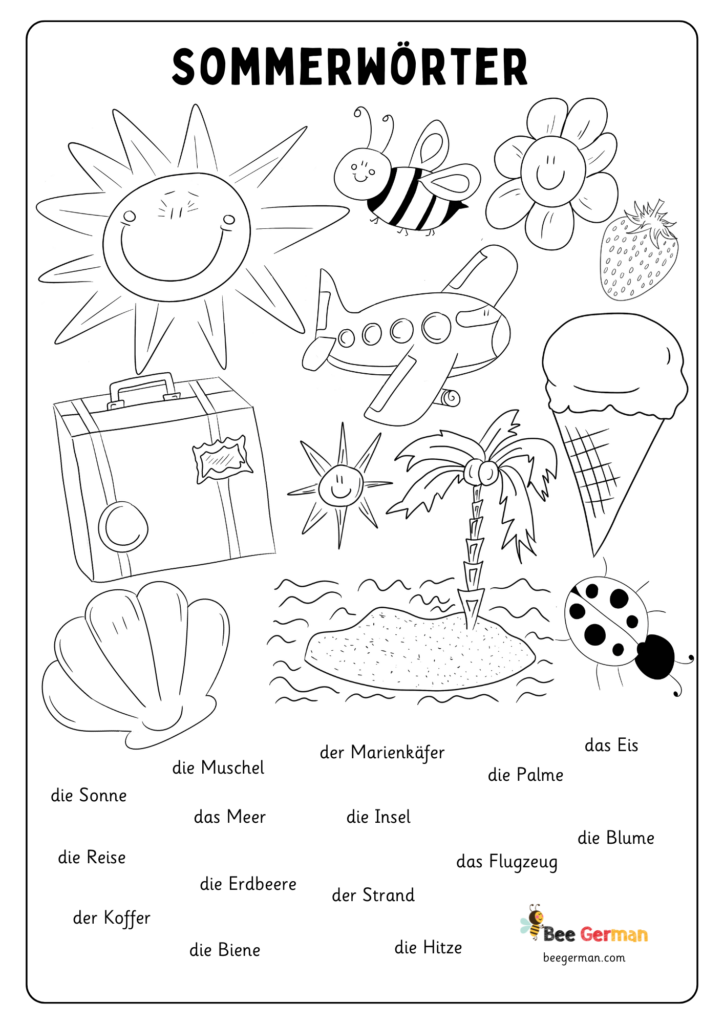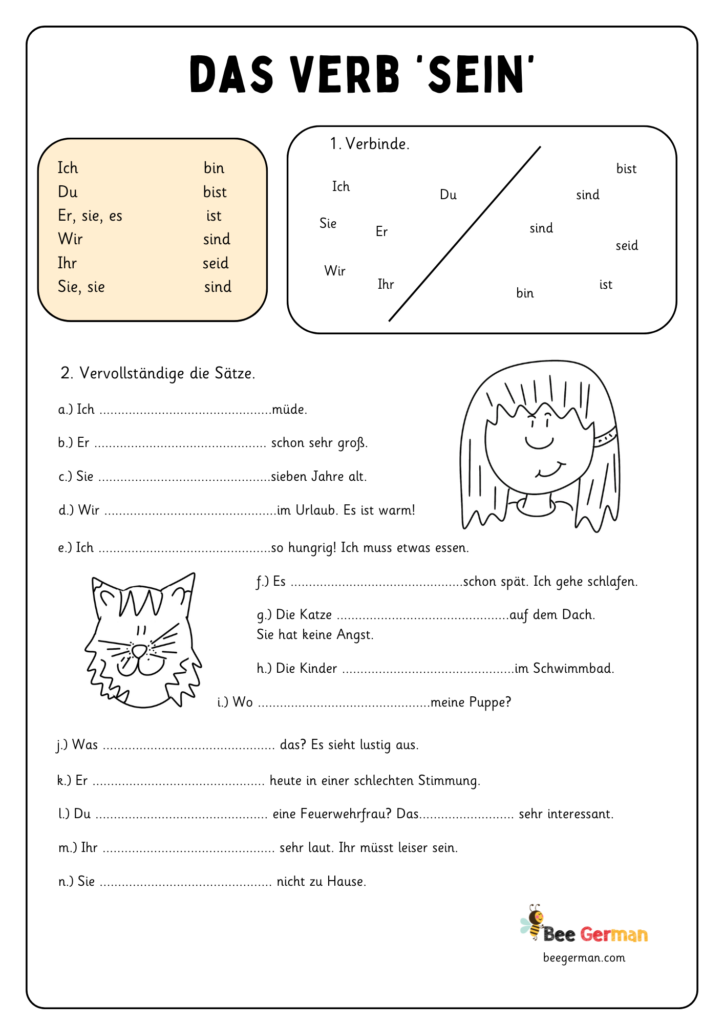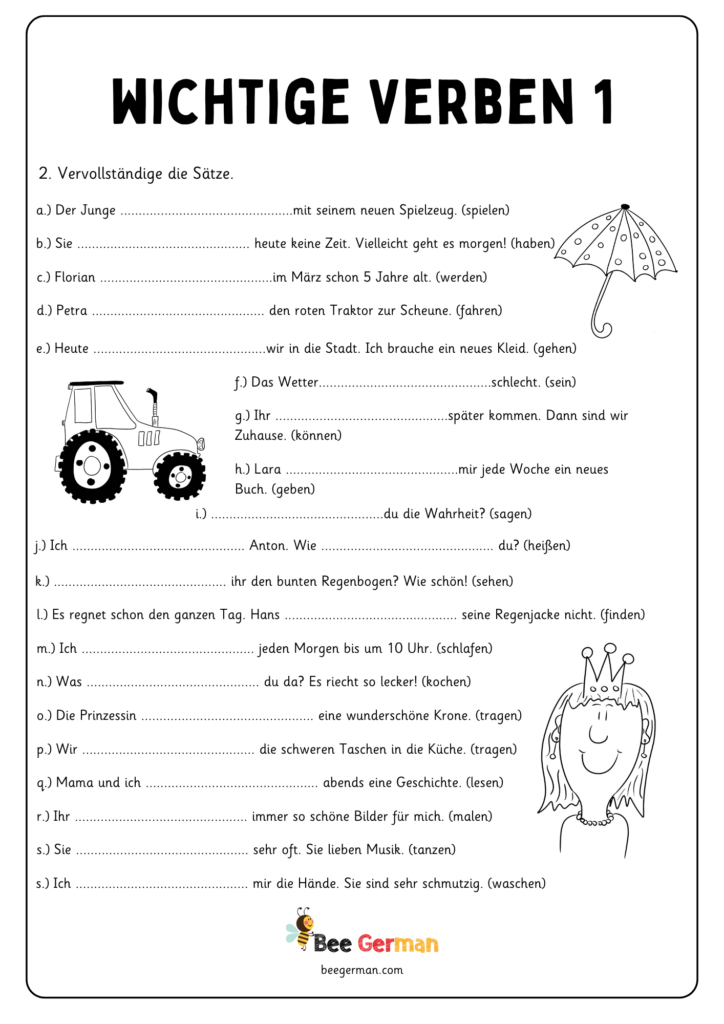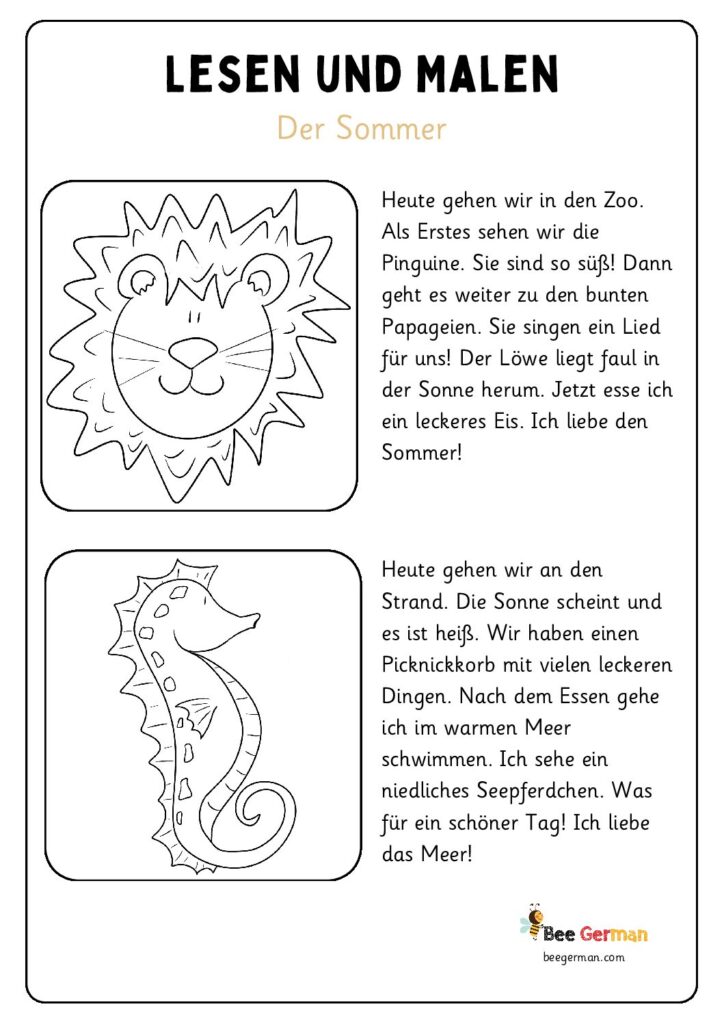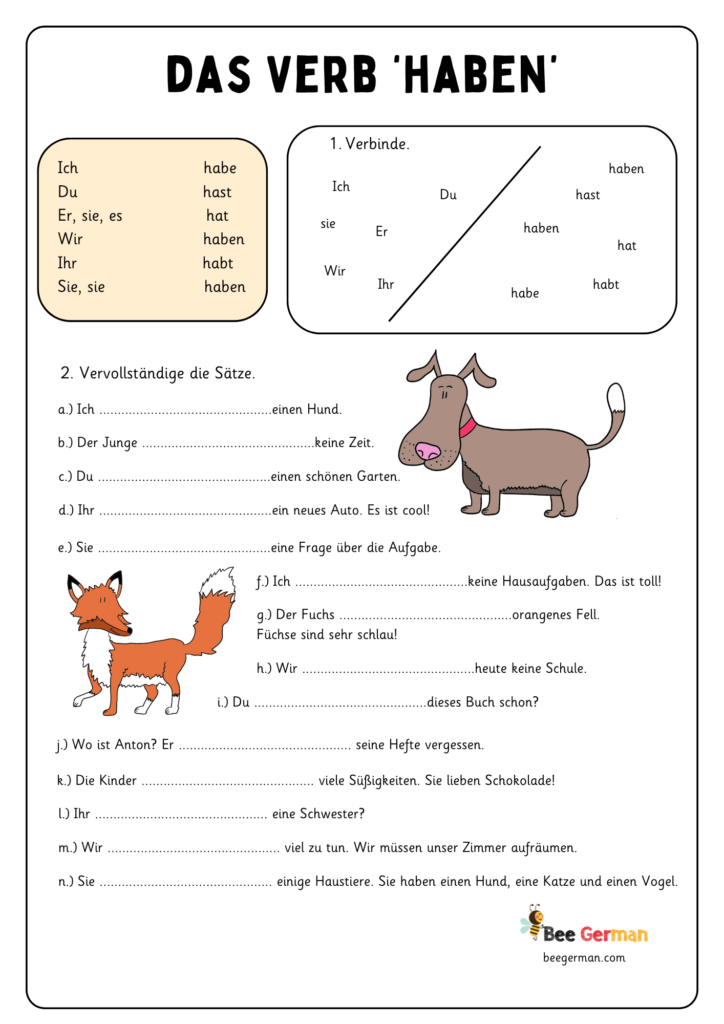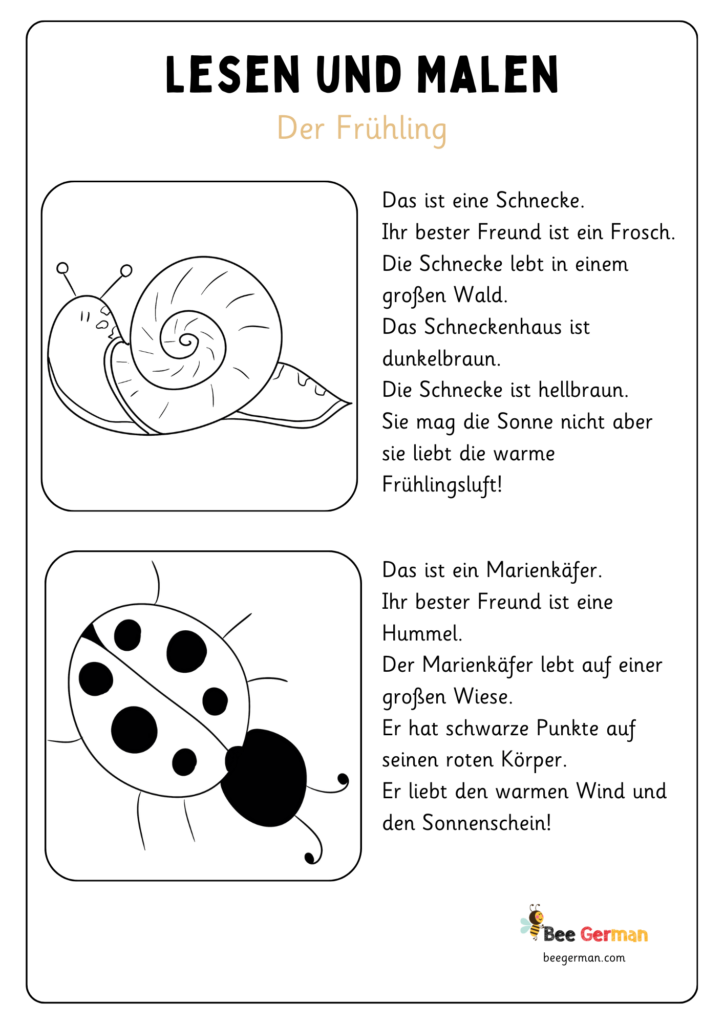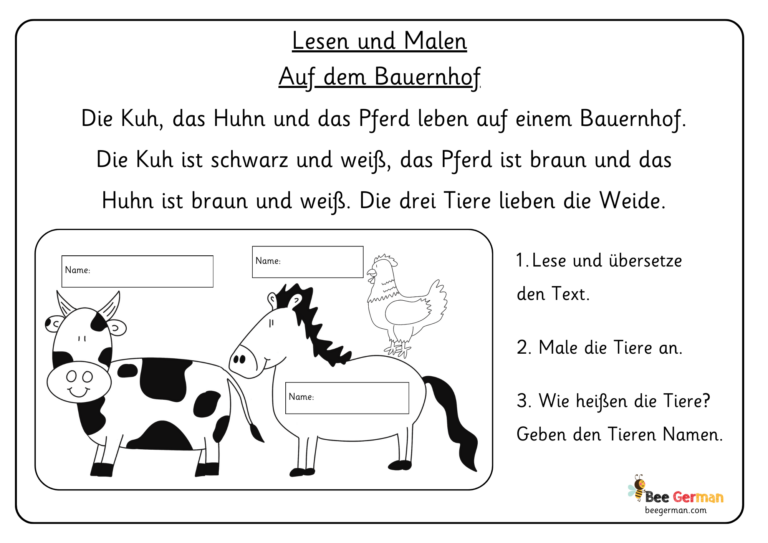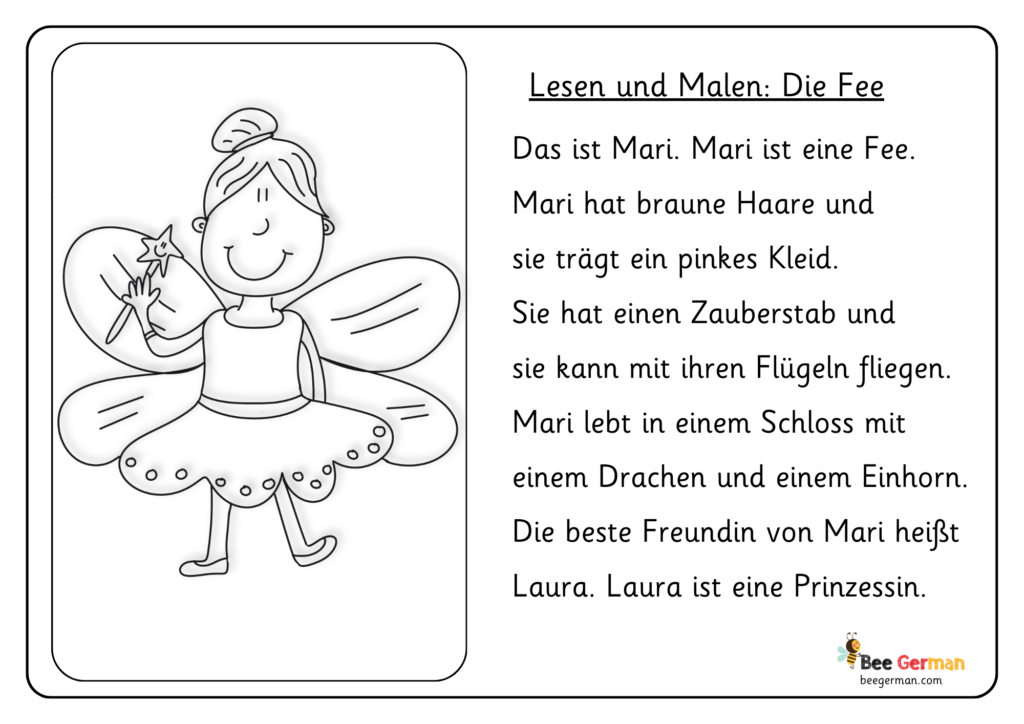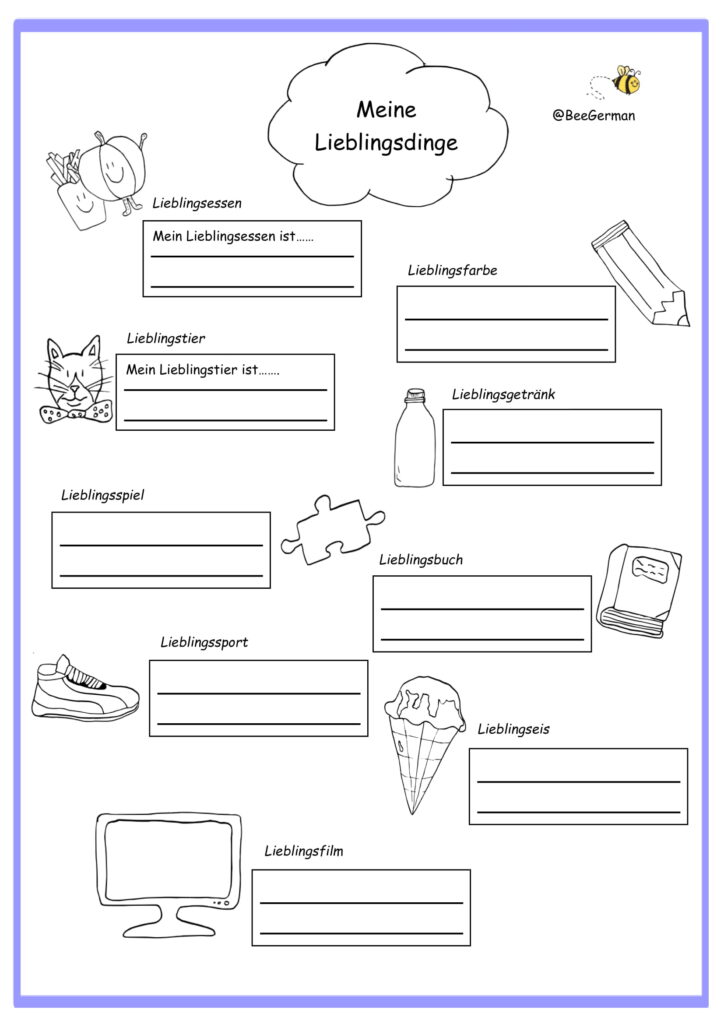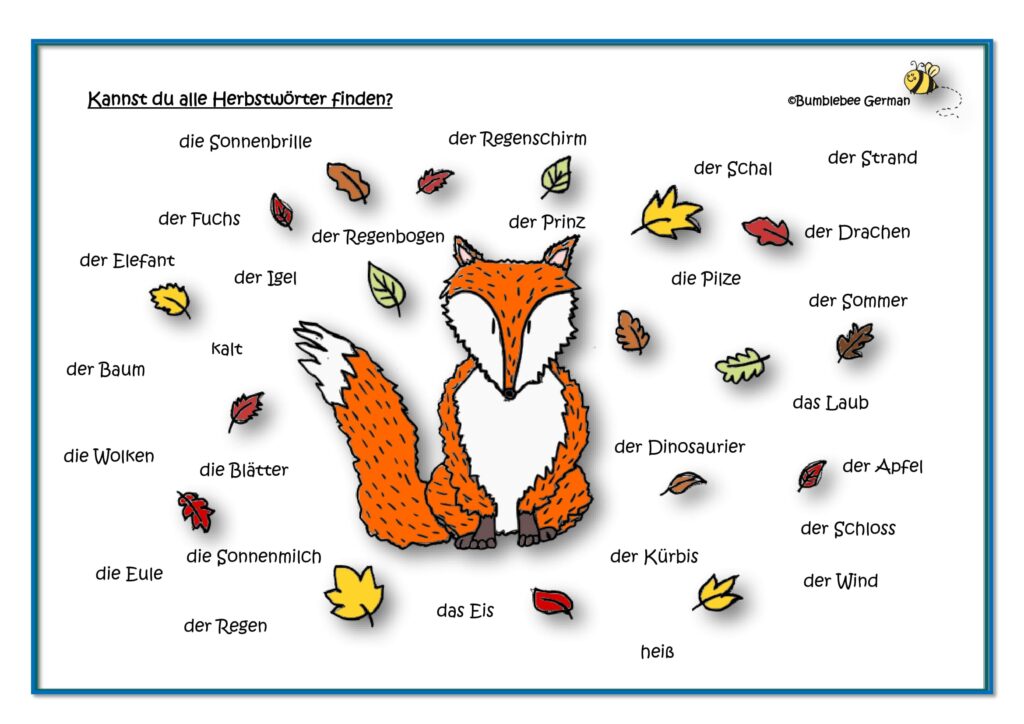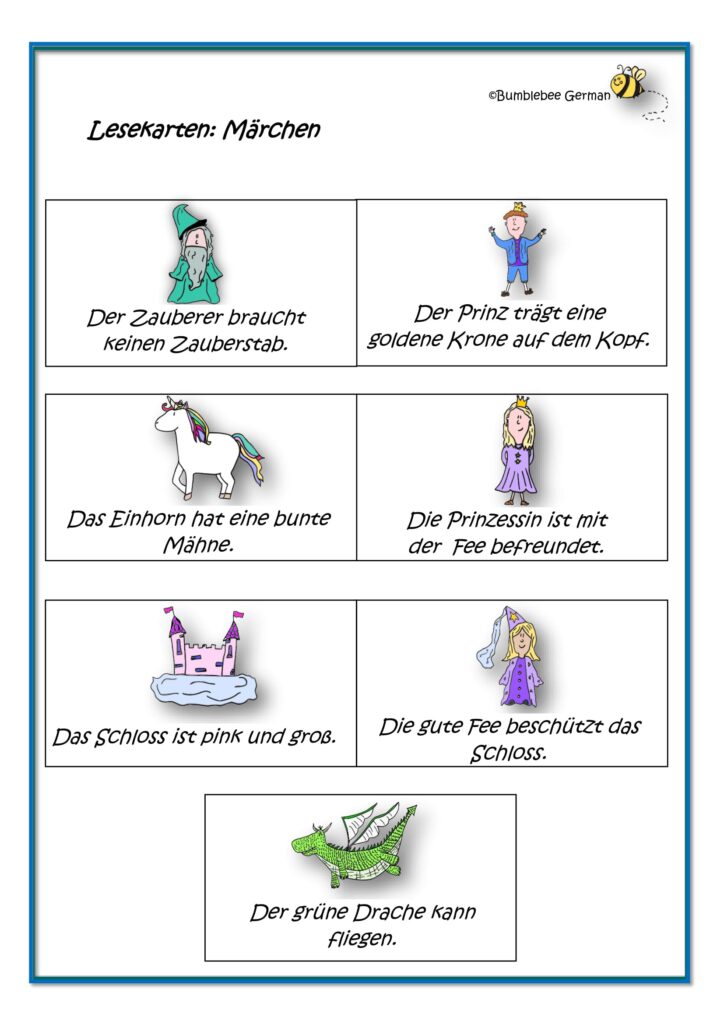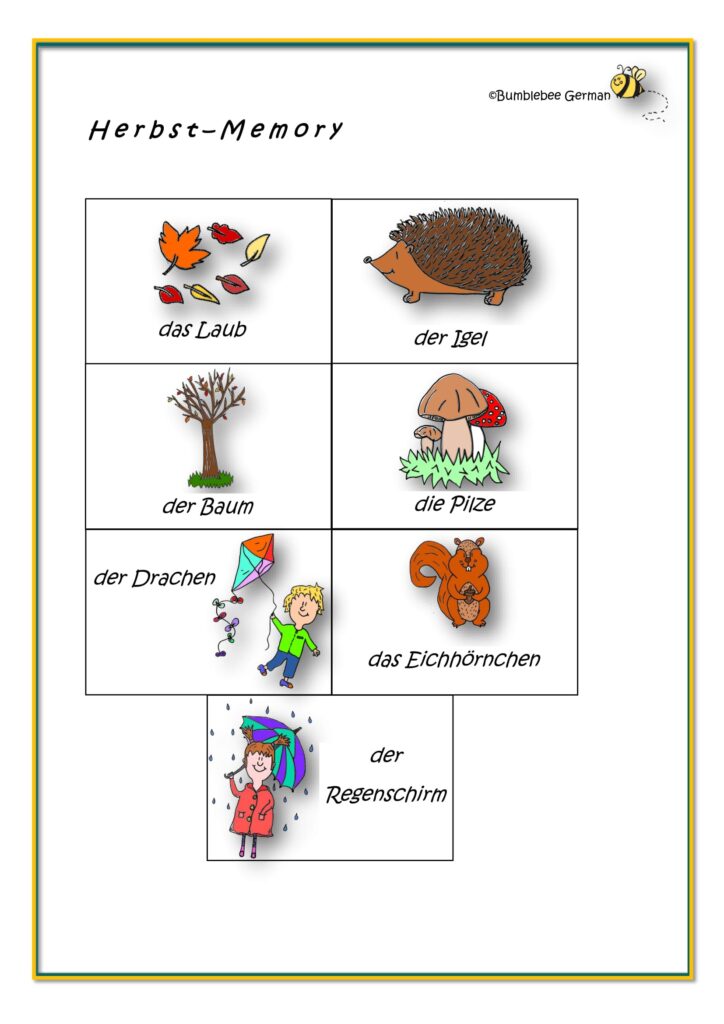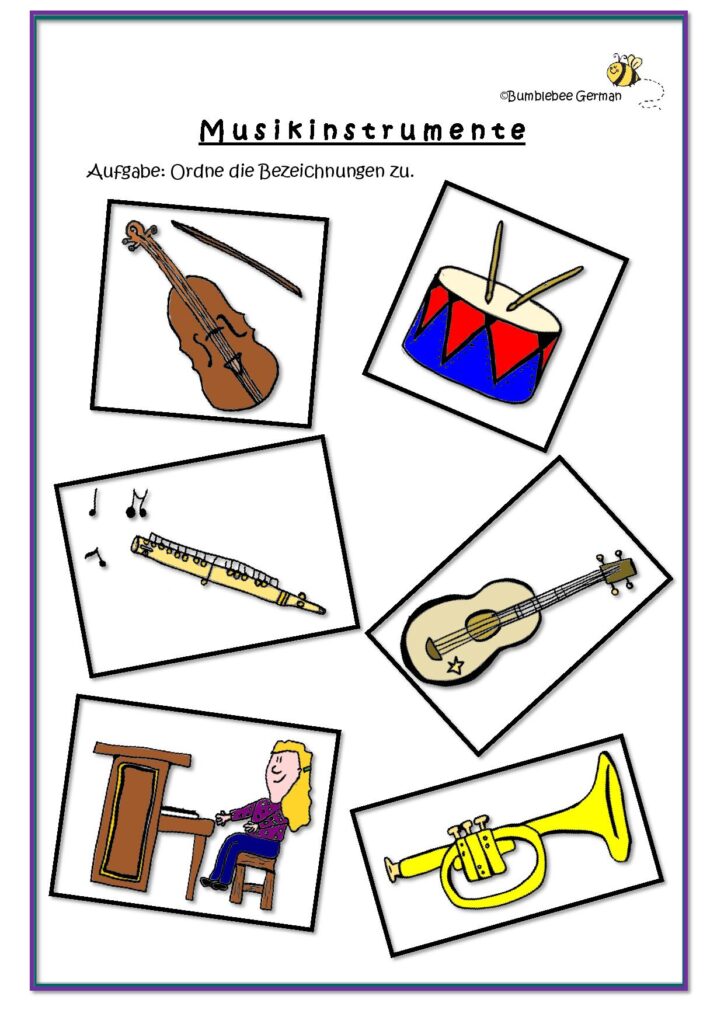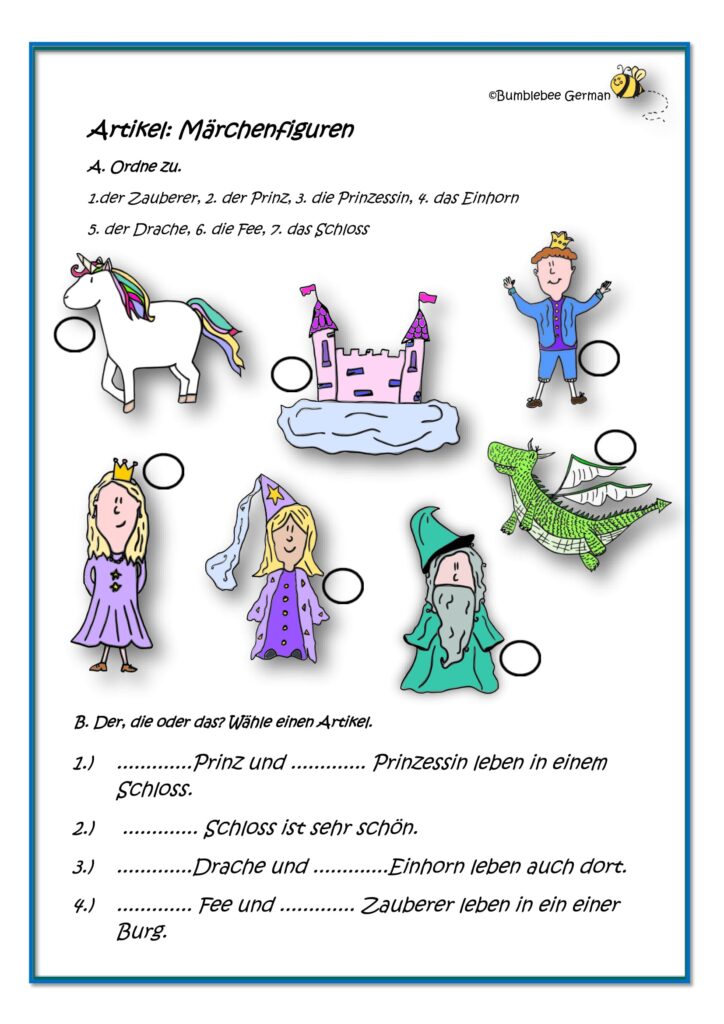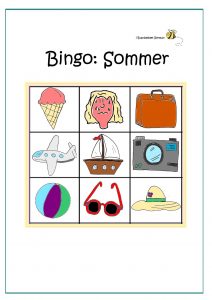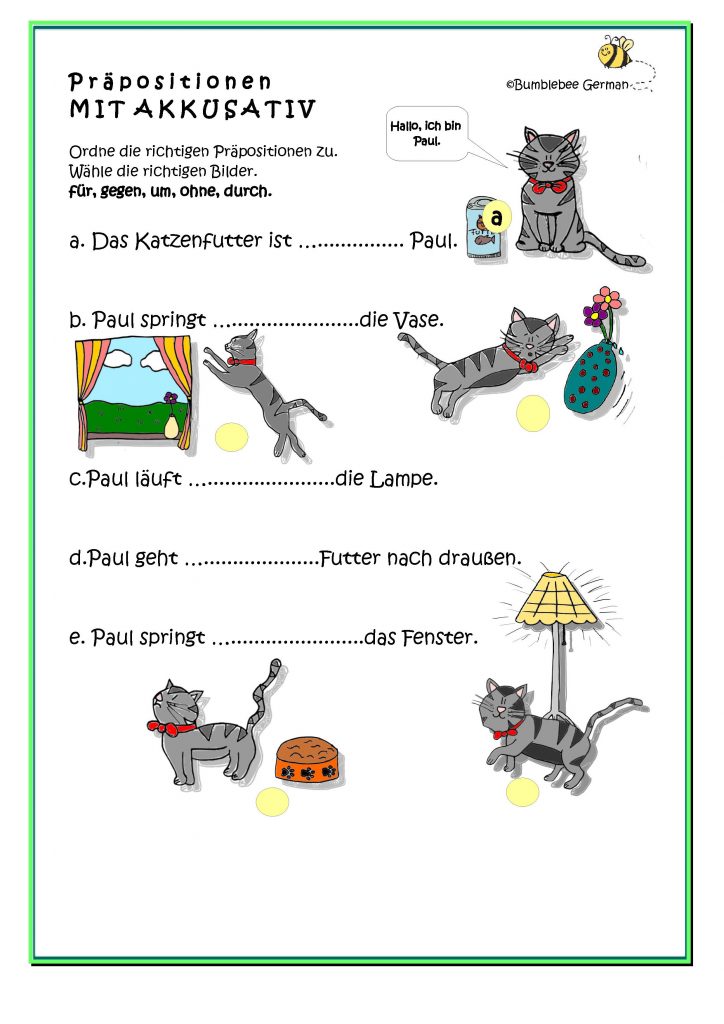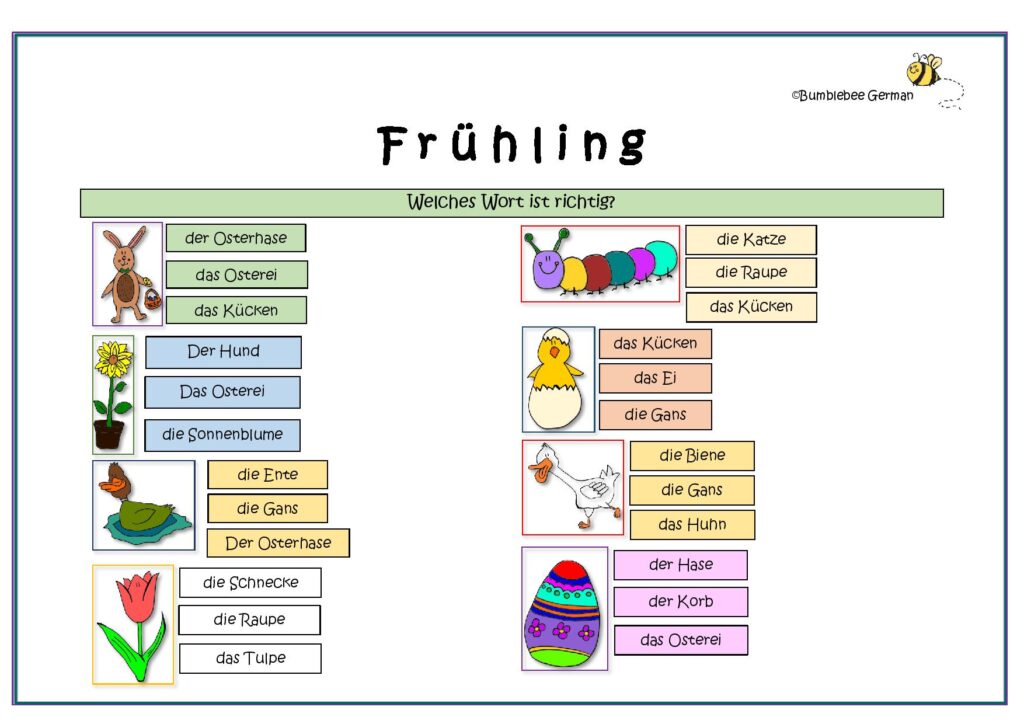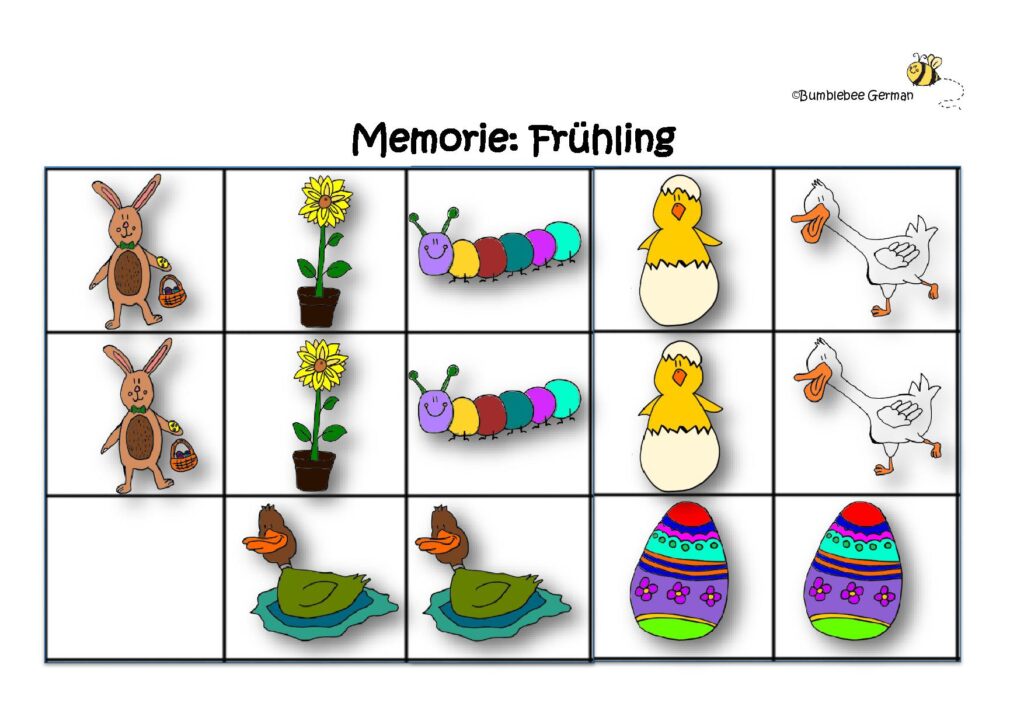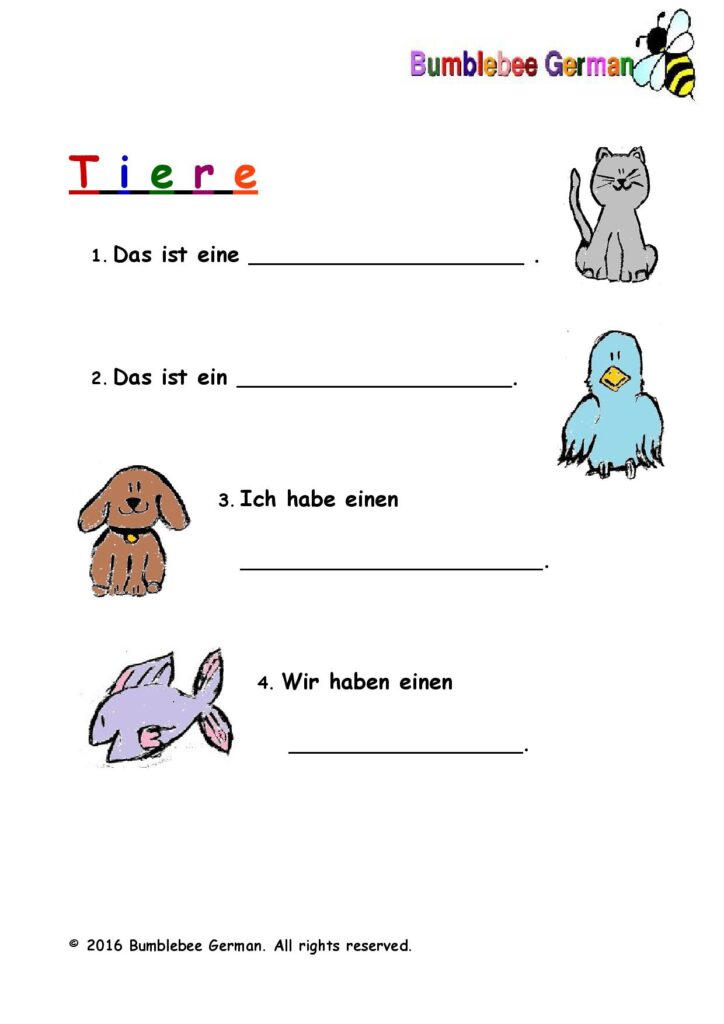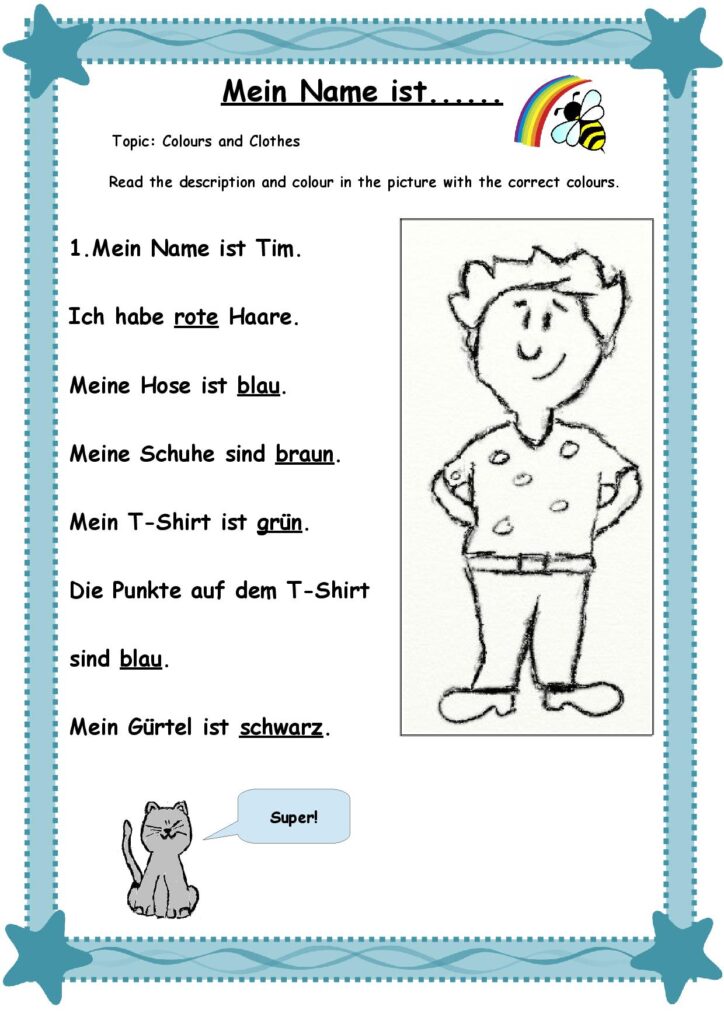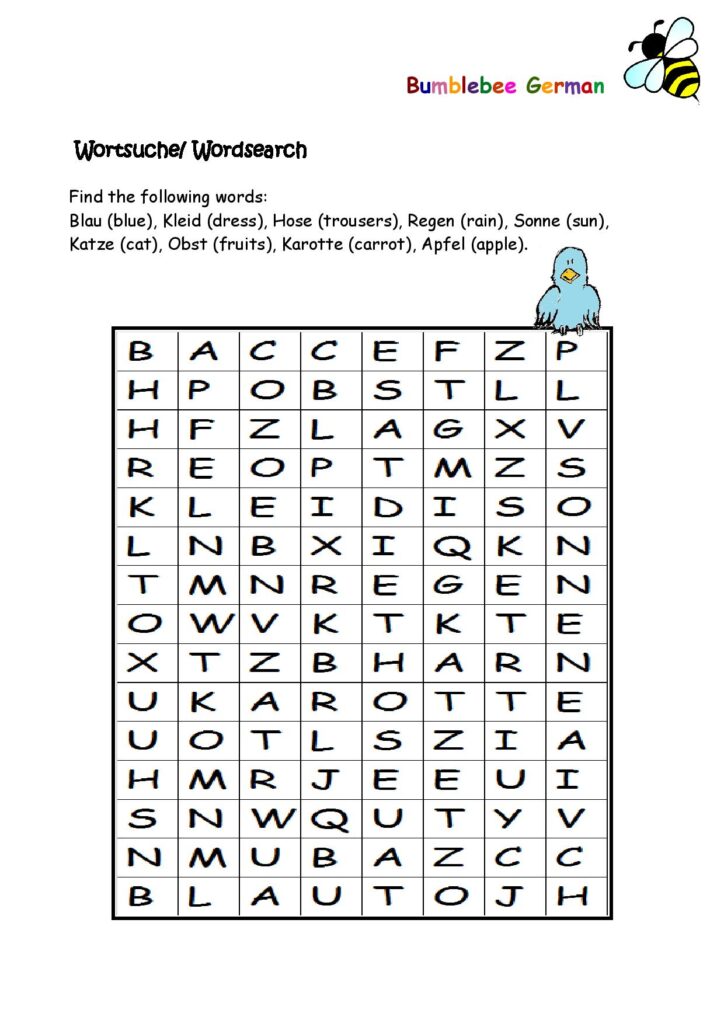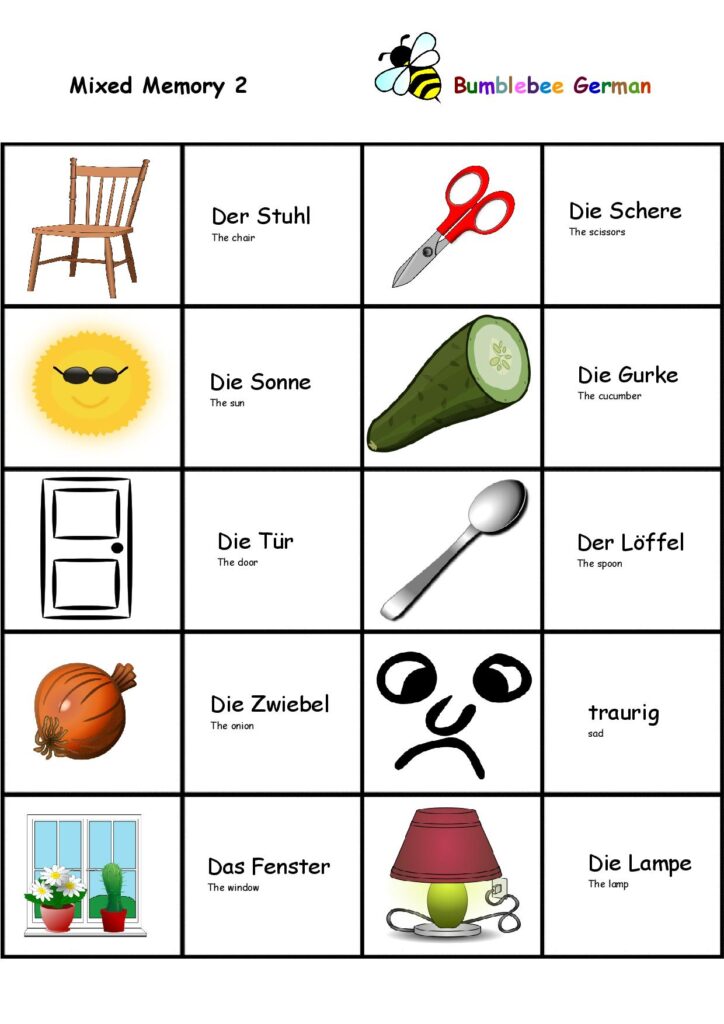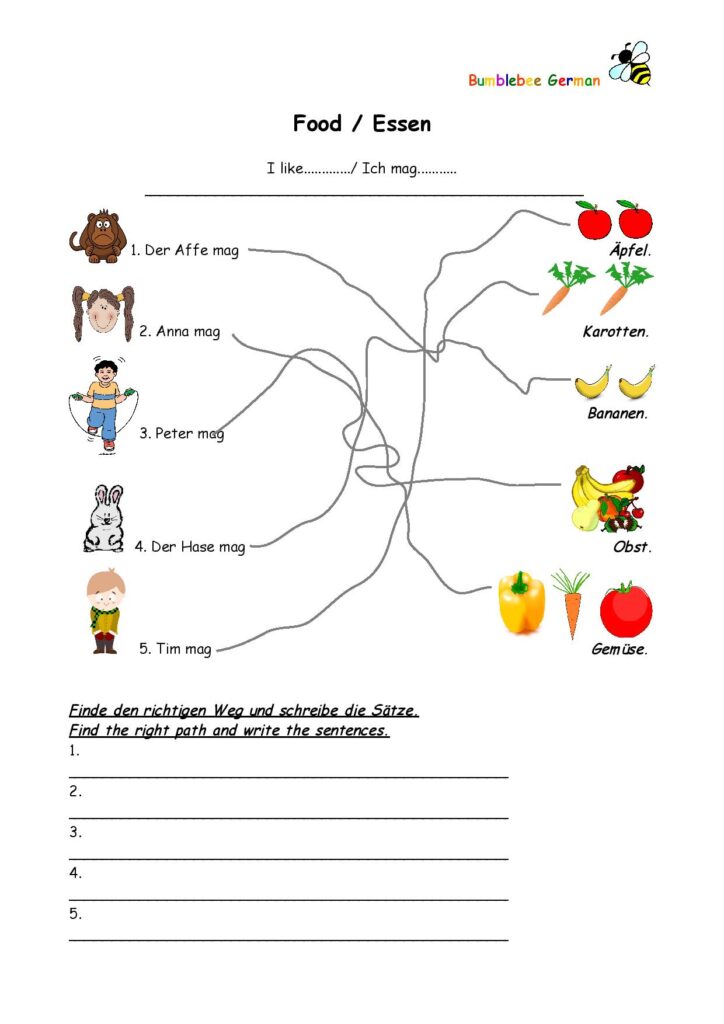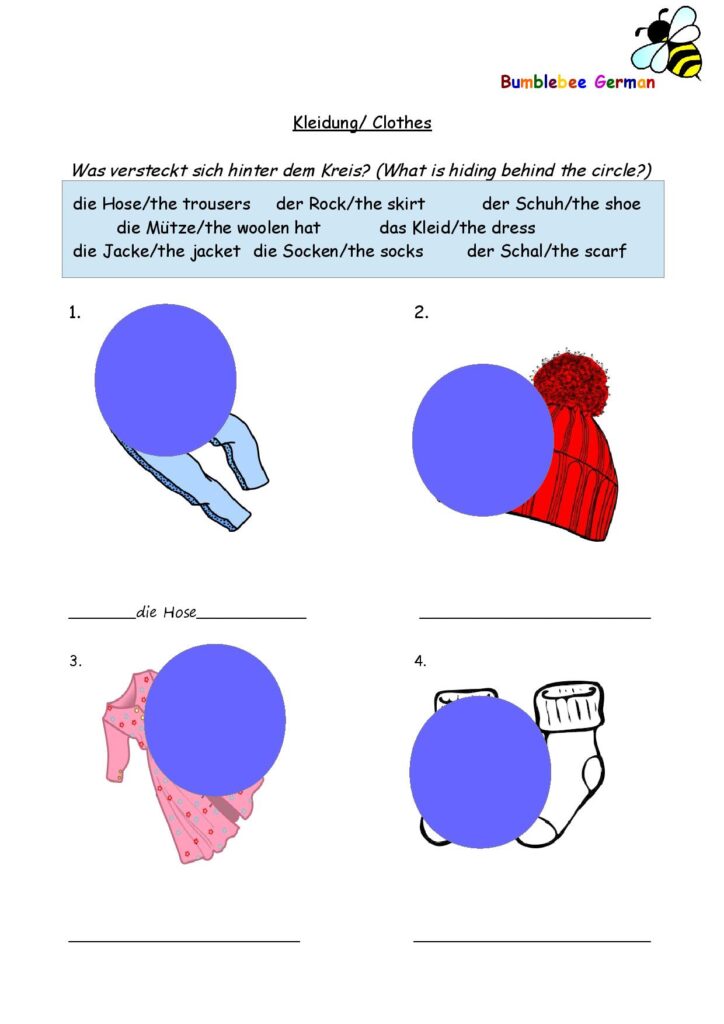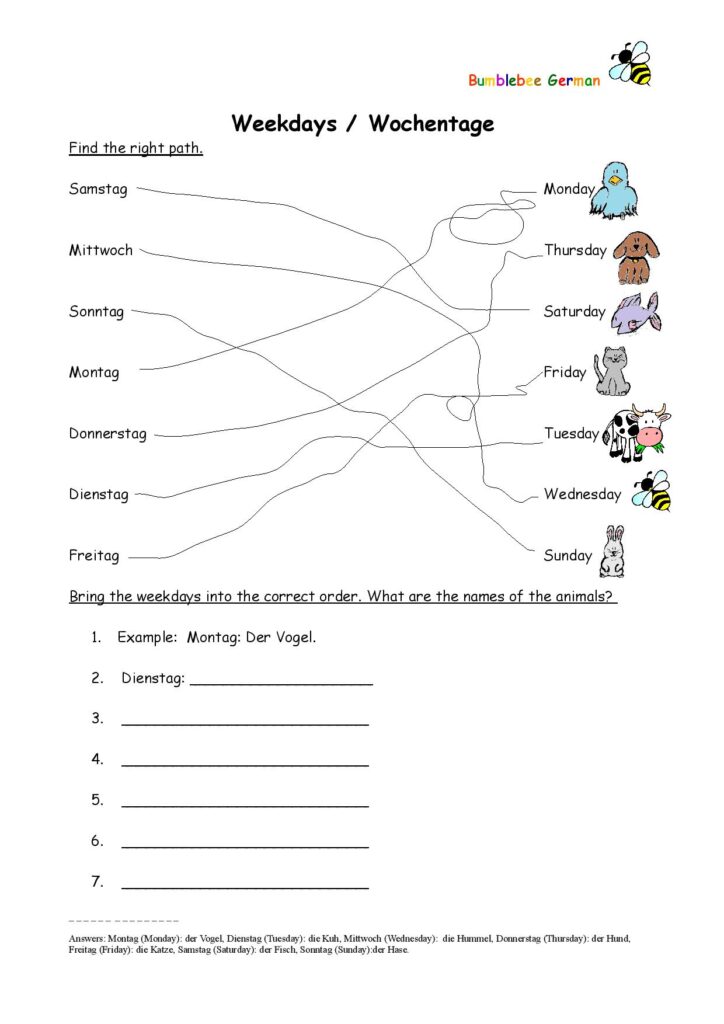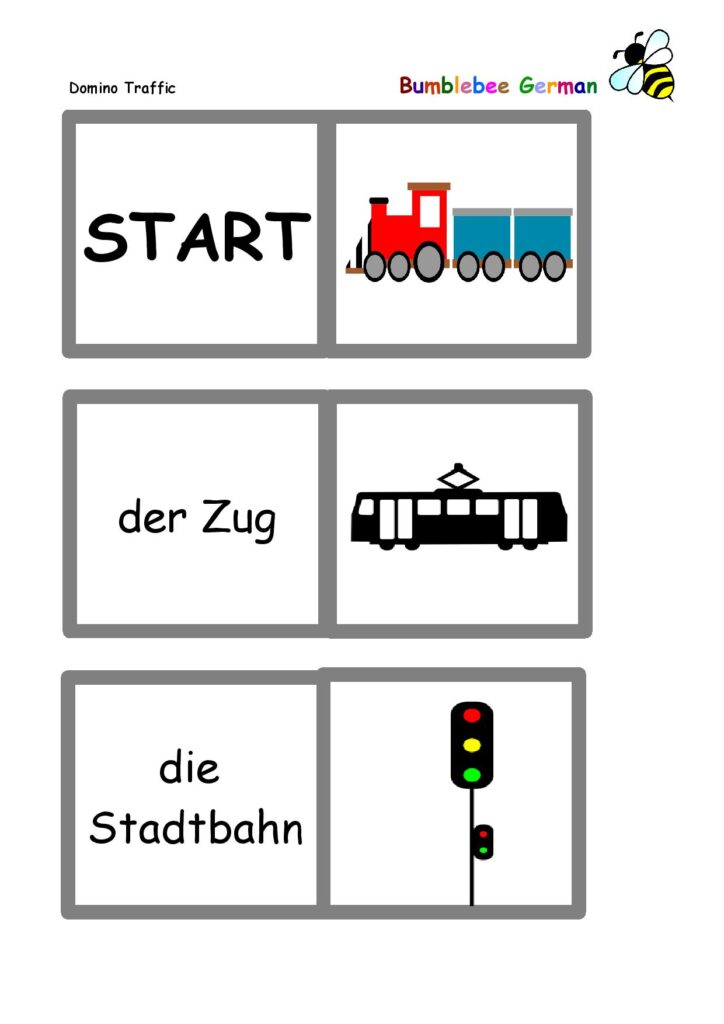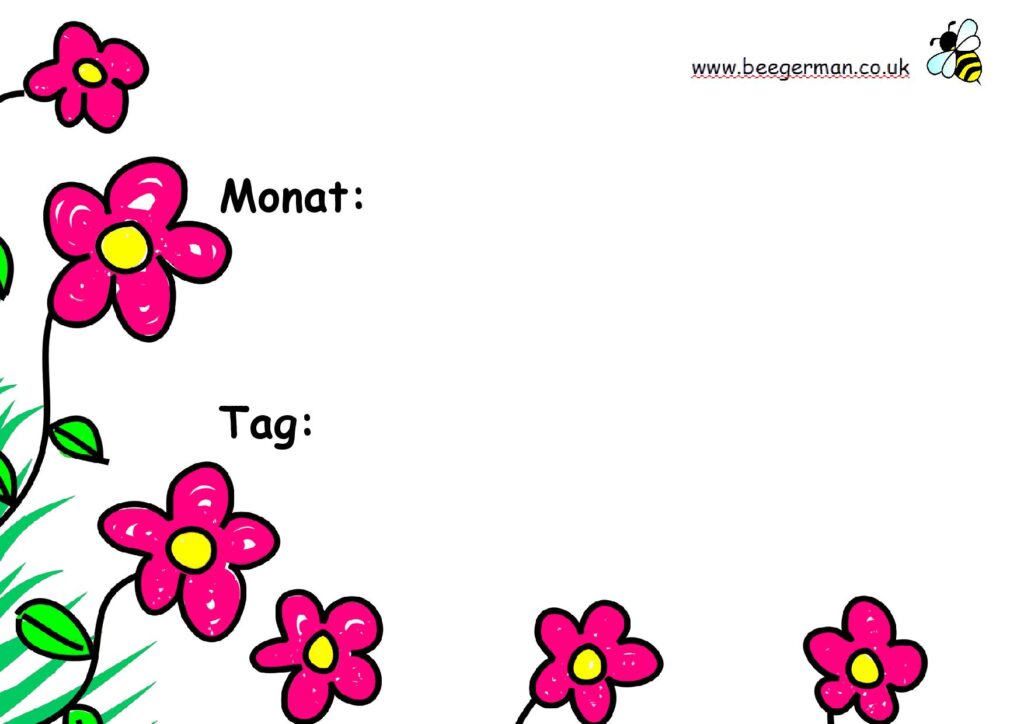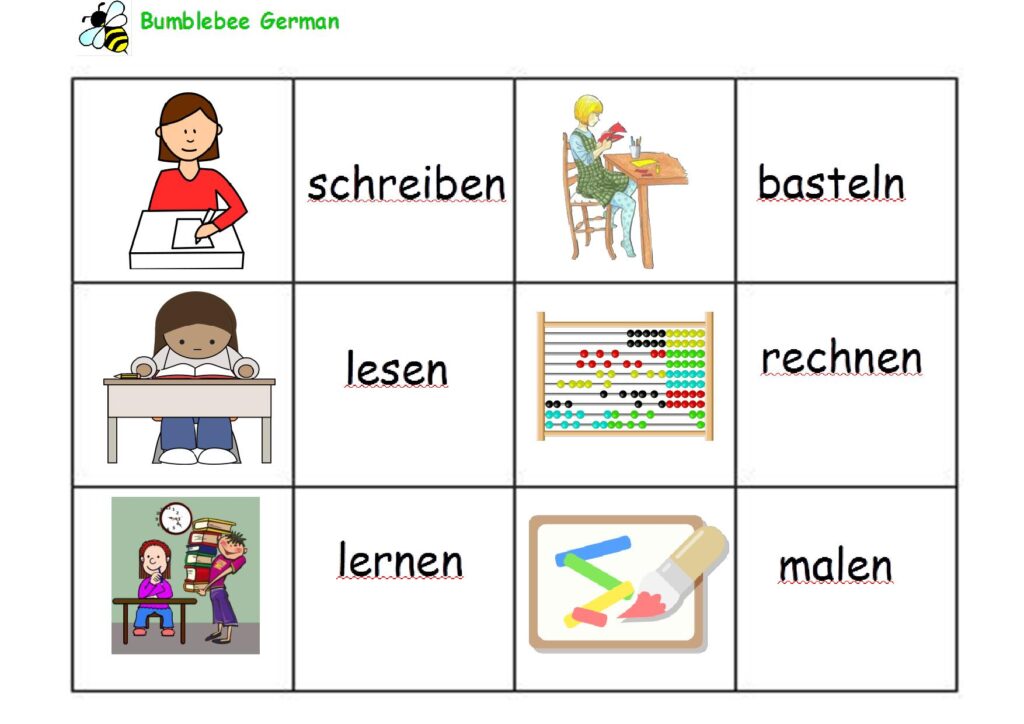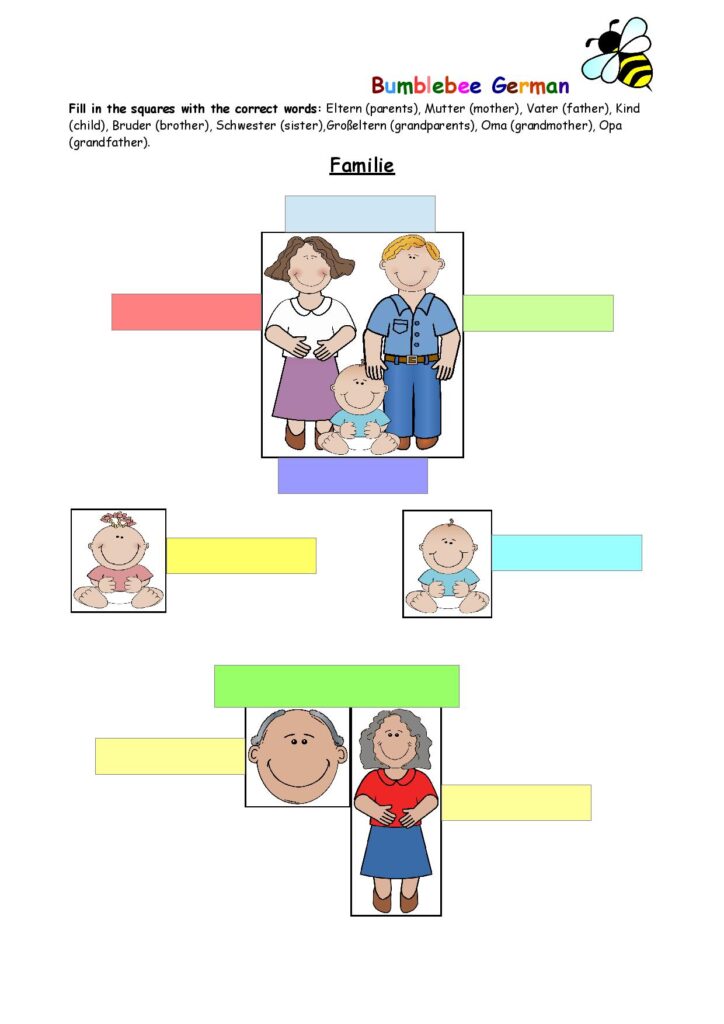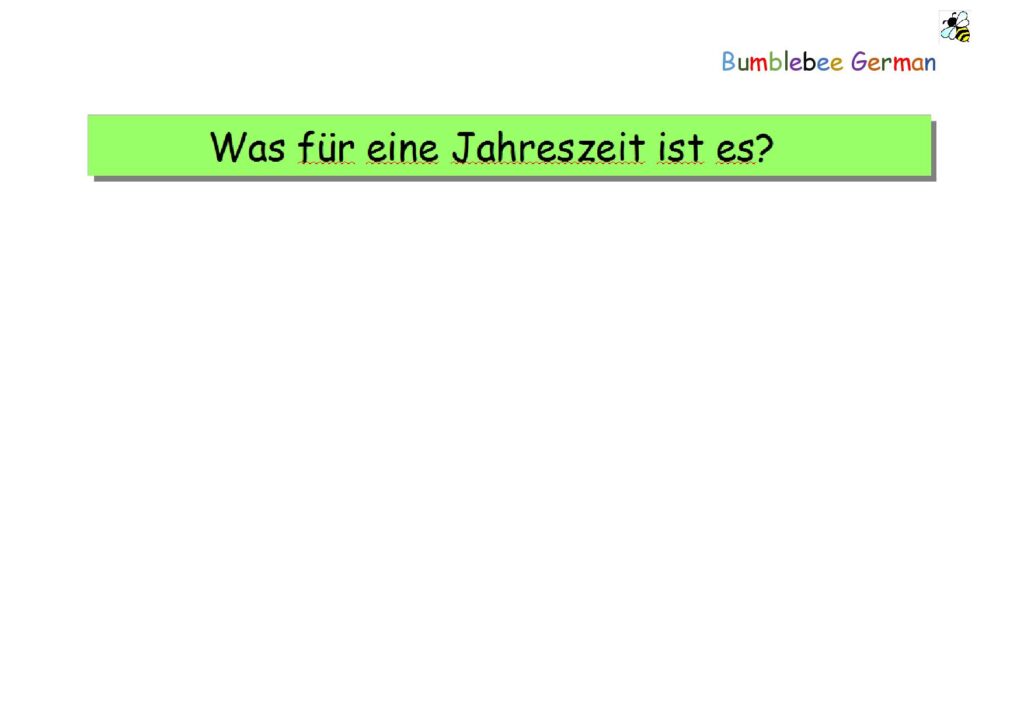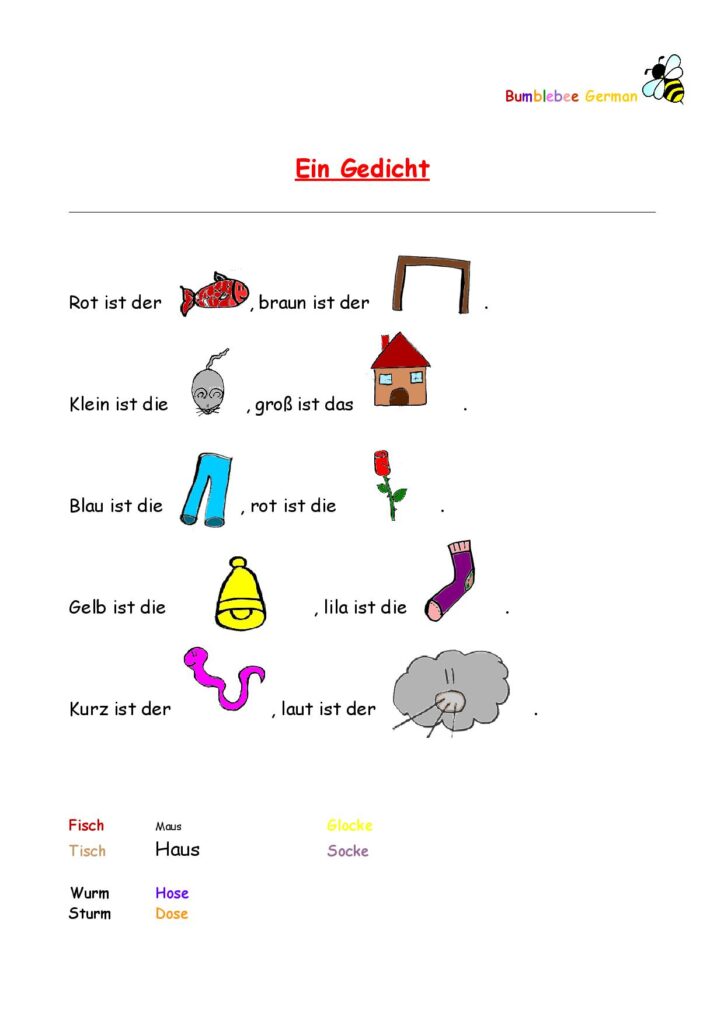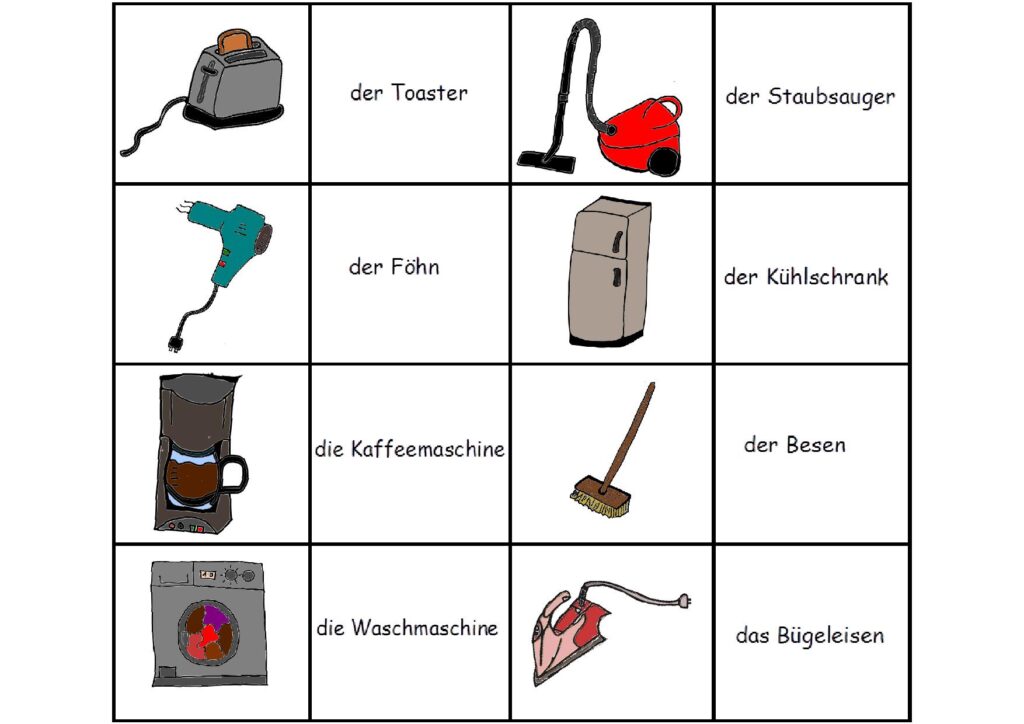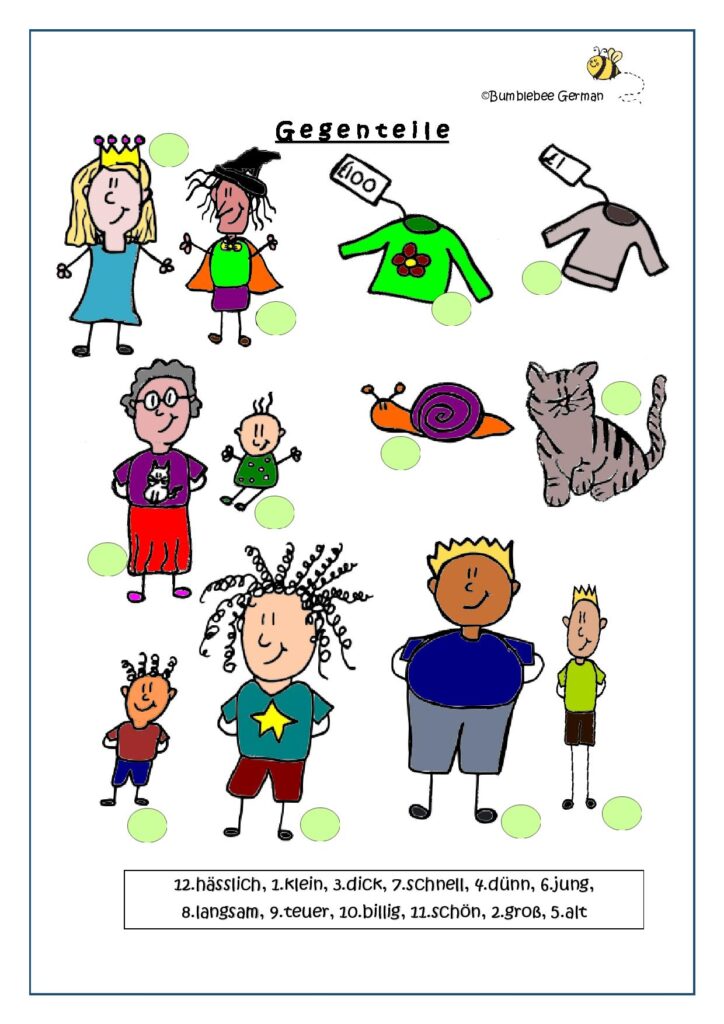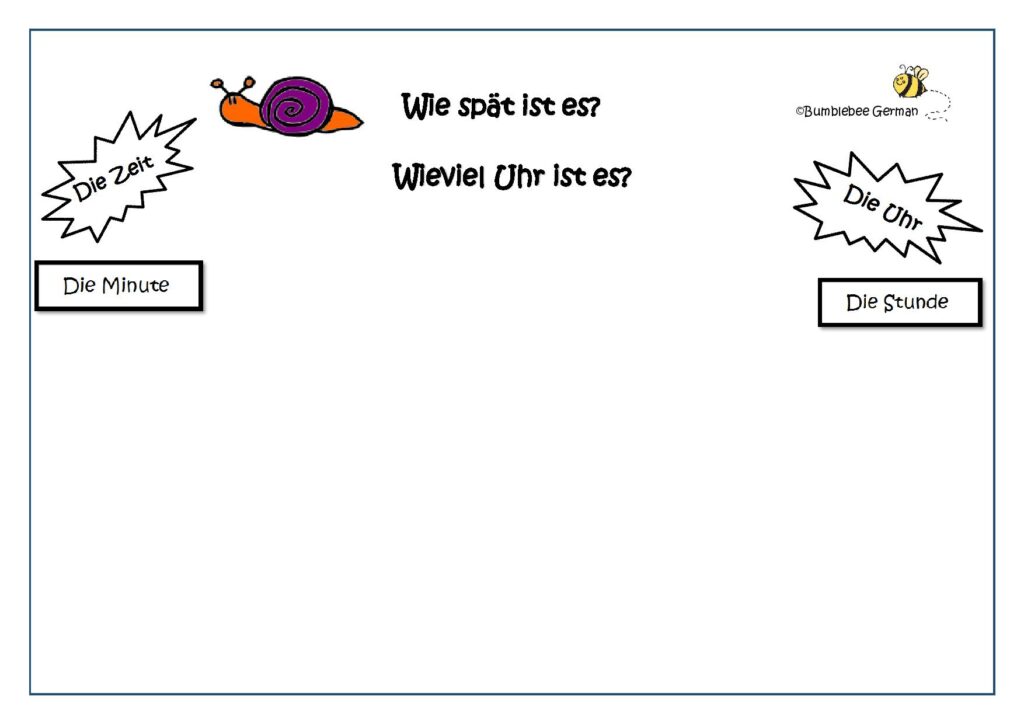Are you teaching German?
Then you are on the right website!
Below you will find German worksheets for kids you can use in your German lessons.
Have you heard about the Bee German: German for Children series? I’ve published 3 fun-filled, educational German workbooks for young kids. They are available at amazon around the world.
On this page, the German worksheets for Kids are all free to download and have been made by professionals. We cover several different topics to help your or any child build up their German Vocabulary in a fun and easy way. We hope these free German worksheets for kids prove to be a vital tool in building up language skills. Please click on ‘Click here’ or the pictures for printable pdf formats.
If you have any requests for German worksheets for kids let me know at beegermanbee@gmail.com and I will get right back to you. If you want to help make your children’s learning experience as creative as possible also checkout my youtube channel for BeeGerman. It has a range of videos to help guide your children through the start of their German learning experience.
German worksheets for kids
Luckily there are many new types of material but unfortunately for most of them you will have to pay! Sometimes I found myself looking for simple but accurate worksheets I can use in my lessons but they can be very hard to find.
In addition, some resources in the internet require you to register and pay a fee. This is very annoying, especially if you need worksheets for your students on a regular basis.
First of all, Bumblebee’s printouts are free! You also don’t have to set up an account.
Simply click on ‘Click here’ and a pdf version of your chosen worksheet opens up.
These German worksheets for kids can be used for children between the ages of 3-10 years. There are some which are also suitable for older children.
Some require your students to write words or sentences down, others are only about matching pictures or words with pictures. Others are very simple and straightforward, others are a little trickier.
Bumblebee's worksheets
Everybody likes playing games from time to time. The memory games are training especially one thing, your student’s memory and his or her knowledge of the German vocabulary!If you are trying to improve your students vocabulary, then memory games are the right thing for you. All worksheets are suitable for beginners and advanced students. Enhance your students vocabulary through on-sheet exercises and activities. Play a game or read short texts.
Learning German should be fun and engaging. But enjoyable lessons require a little bit of preparation and creativity. Lessons have to be as engaging and enjoyable as possible. One way of improving your lessons is to use our worksheets. Bumblebee German’s colorful drawings should help to get absorbed into the creative world of language learning.
For this reason, shape your lessons around Bumblebee German’s videos and printouts.When you are teaching children a foreign language, it is very important to your students speak! Let them be proud and let them show off their skills. Speaking is an essential part of the language learning process. Let your students be passionate about language learning. Worksheets and videos should be an addition to your lessons. It should not be the general focus.
Furthermore, kids are very quick to notice good but also bad attitudes. That’s why it is important to be a positive and happy teacher! Good teachers should encourage their students not hinder them! Please do not have too many expectations! Language learning is a process, your kids won’t be able to learn a language in only a few weeks or months.Learning is always linked to collaboration. Have German conversations right from the beginning.
In my opinion, you shouldn’t hesitate to speak German to your new students. Language learning enables your students to learn a foreign language but also find out more about another culture. Learning another language only generates positive outcomes! It increases your students ability to concentrate and improves his or her self-confidence.
Finally, it is also very likely that early foreign language learning develops a life-long interest in other cultures and foreign languages. Often this adds to a more positive outlook in life. Not only do children learn a language but they also learn how languages work and why communication is so important. Learning for life!
Please click on the image for a pdf version.
Sommerwörter für Kinder. Vokabelübung für deutschlernende Kinder.
Summer Vocabulary for German learners.
Verbinde die Wörter mit den Bildern. Match the words with the pictures.
Das Verb “sein”. Eine Übung für deutschlernende Kinder.
The verb “to be”. An exercise for German learners.
Vervollständige die Sätze. Finish the sentences.
Lesen und Malen: Das Pferd. Leseübung für deutschlernende Kinder.
A reading exercise for German learners.
Lies den Text und male das Pferd an. Read the text and colour the horse.
Eine Postkarte von Toni. Leseübung für deutschlernende Kinder. Arbeitsblatt
A postcard from Toni. A reading exercise for German learners.
Lies die Postkarte von Toni und male die Bilder an.
Lesen und Malen: Der Frühling (Leseübung für deutschlernende Kinder)
Lies den Text und male die Insekten an.
Read the text and colour in the insects.
Lesen und Malen (Leseübung für Deutschlerner):
Lesen und Malen: Read and paint. Auf dem Bauernhof. On the farm. Die Kuh, das Huhn und das Pferd leben auf einem Bauernhof. The cow, the chicken and the horse live on the farm. Die Kuh ist schwarz und weiß, das Pferd ist braun und das Huhn ist braun und weiß. Die drei Tiere lieben die Weide. The cow is black and white, the horse is brown and the chicken is brown and white. The three animals love the field.
Lesen und Malen: Die Fee (Leseübung für deutschlernende Kinder)
Lies den Text und male die Fee an.
Read the text and colour in the fairy.
Das ist Mari. Mari ist eine Fee.
This is Mari. Mari is a fairy.
Mari hat braune Haare und
Mari has brown hair and
sie trägt ein pinkes Kleid.
she wears a pink dress.
Sie hat einen Zauberstab und
She has a magic wand and
sie kann mit ihren Flügeln fliegen.
she can fly with her wings.
Mari lebt in einem Schloss mit
Mari lives in a castle with
einem Drachen und einem Einhorn.
a dragon and a unicorn.
Die beste Freundin von Mari heißt Laura. Laura ist eine Prinzessin.
The best friend of Mari is called Laura. Laura is a princess.
Meine Lieblingsdinge (My favourite….)
Lieblingsessen
Favourite dish
Mein Lieblingsessen ist …
My favourite dish is……
Lieblingsfarbe /favourite colour, Lieblingstier/ favourite animal, Lieblingsgetränk/ favourite drink,
Lieblingsspiel/ favourite game, Lieblingsbuch/ favourite book, Lieblingssport/ favourite sport,
Lieblingseis/ favourite ice-cream, Lieblingsfilm/ favourite film.
Kannst du alle Herbstwörter finden?
Can you find the autumn words?
der Fuchs – the fox , der Baum – the tree, die Wolken – the clouds, die Eule – the owl, der Regen – the rain
die Blätter- the leaves, kalt – cold, der Igel – the hedgehog, der Regenbogen – the rainbow, der Regenschirm – the umbrella,
der Schal- the scarf, der Drachen- the kite, die Pilze – the mushrooms, das Laub- the foliage, der Apfel- the apple,
der Kürbis – the pumpkin, der Wind- the wind
Halloween: Wer hat….?
Halloween: Who has……? Reading Game
Ich habe die erste Karte. – I have the first card.
Wer hat………. – Who has….?
Ich habe….. – I have…….
eine/zwei Hexe (a witch), ein/blaues Monster (a monster),
das weiße Skelett (the white skeleton), drei Geister (three ghost),
die Geisterbahn (the ghost train), die bunten Blätter (the colourful leaves),
die Pilze (the mushrooms), den Igel (the hedgehog), die Spinne (the spider).
Lesekarten: Märchen
Reading cards: fairy tales
Der Zauberer braucht keinen Zauberstab. – The wizard does not need a wand.
Der Prinz trägt eine goldene Krone auf dem Kopf. – The prince wears a golden hat on his head.
Das Einhorn hat eine bunte Mähne. – The unicorn has a colourful mane.
Die Prinzessin ist mit der Fee befreundet. – The princess is friends with the fairy.
Das Schloss ist pink und groß – The palace is pink and big.
Die gute Fee beschützt das Schloss. – The good fairy protects the palace.
Der grüne Drache kann fliegen. – The green dragon can fly.
Memoryspiel: Herbst
das Laub – the foliage
der Igel – the hedgehog
der Baum – the tree
die Pilze – the mushrooms
der Drachen – the kite
das Eichhörnchen – the squirrel
der Regenschirm- the umbrella
Musikinstrumente
Musical instruments
die Geige/ die Violine – the violin
die Gitarre- the guitar
die Flöte – the flute
das Klavier – the piano
die Trommel – the drum
die Trompete – the trumpet
Artikel: Märchenfiguren
Articles: Fairy tale characters
Aufgabe A.
Excercise A.
die Fee – the fairy
die Prinzessin- the princess
der Prinz- the prince
der Drache- the dragon
der Zauberer- the wizard
das Einhorn- the unicorn
Excercise B.
1.) Der Prinz und die Prinzessin leben in einem Schloss.
2.) Das Schloss ist sehr schön.
3.) Der Drache und das Einhorn leben auch dort.
4.) Die Fee und der Zauberer leben in ein einer Burg.
Bingo: Sommer
Ausschneiden und Bingo/ Lotto spielen.
die Eiscreme -the ice cream
oder das Eis – the ice cream
die Hitze – the heat
der Koffer- the suitcase
das Flugzeug – the airplane
das Boot- the boat
oder das Schiff – the ship
der Fotoapparat- the camera
der Ball- the ball
die Sonnenbrille – the sunglasses
der Hut – the hat
Präpositionen mit Akkusativ
Ordne die richtigen Präpositionen zu.
Wähle die richtigen Bilder.
Das Katzenfutter ist für Paul.
The cat food is for Paul.
Paul springt gegen die Vase.
Paul jumps against the vase.
Paul läuft um die Lampe.
Paul walks around the lamp.
Paul geht ohne Futter nach draußen.
Paul goes outside without food.
Paul springt durch das Fenster.
Paul jumps through the window.
Lesekarten: Zootiere
Ausschneiden und lesen.
Der Affe frisst gerne Bananen.
Das Krokodil ist gefährlich.
Die Giraffe hat einen langen Hals.
Der Löwe ist der König der Tiere.
Der Bär hat braunes Fell.
Der Elefant hat einen Rüssel.
Das Nilpferd liebt Wasser.
Der Penguin frisst gerne Fisch.
Das Zebra hat schwarze Streifen.
Der Papagei hat bunte Federn.
Reading cards: Zoo animals
Cut out and read.
The monkey likes eating bananas.
The crocodile is dangerous.
The giraffe has a long neck.
The lion is the king of the animals.
The bear has brown fur.
The elephant has a trunk.
The hippo loves water.
The penguin likes eating fish.
The zebra has black stripes.
The parrot has colourful feathers.
Arbeitsblatt: Körperpflege
die Haarbürste, die Seife, die Zahnbürste, das Duschgel, das Shampoo, die Zahnpasta, der Kamm.
Ich wasche mir die Hände mit Seife.
Dann dusche ich mich mit Duschgel.
Ich wasche meine Haare mit Shampoo.
Ich putze mir die Zähne mit Zahnpasta und einer Zahnbürste.
Ich bürste mir die Haare mit einer Haarbürste.
Dann kämme ich mir meine Haare mit einem Kamm.
the hairbrush, the soap, the toothbrush, the shower gel, the shampoo, the toothpaste, the comb.
I wash my hands with soap.
Then I shower with shower gel.
I wash my hair with shampoo.
I brush my teeth with toothpaste and a toothbrush.
I brush my hair with a hairbrush.
Then I comb my hair with a comb.
Die Osterhasen: Lesen und malen
Lesen und malen.
Der Osterhase trägt eine rote Schleife. Der Osterkorb ist braun. In dem Osterkorb liegen viele bunte Ostereier. Die Karotte ist orange. Das große Osterei ist gelb und lila.
Was steht auf dem Schild unter dem weißen Osterhasen? -Frohe Ostern!-
Male die restlichen Ostereier bunt an!
Read and colour in.
The easter bunny wears a red ribbon. The easter basket is brown. There are many colourful easter eggs in the easter basket. The carrot is orange. The big easter egg is yellow and purple.
What does it say on the sign below the white easter bunny? -Happy Easter!-
Colour in the remaining easter eggs.
Wimmelbild: Describe what you see
Many activities surround wimmelpictures.
Some suggestions:
You can ask your student to find objects. For example:
‘Wo ist die Brille?’ Where are the glasses?
You can also point at an object, animal or person and ask: ‘Wer ist das?’ / ‘Was ist das?’ Who is this? / What is this?
Use adjectives in your sentences/ questions.
‘Welche Farbe hat die Blume?’ What colour is the flower?
“Diese Blume ist rot und diese Blume ist lila.” This flower is red and this flower is purple.
Multiple choice: Frühling/ spring
Welches Wort ist richtig? Which word is correct?
der Osterhase (easter bunny), die Sonnenblume (sun flower), die Ente (duck), das Kücken (chick), die Raupe (caterpillar), die Tulpe (the tulip), die Gans (goose), das Osterei (easter egg).
Memory Game: Frühling/ Spring
(one pdf file!)
der Osterhase (easter bunny), die Sonnenblume (sun flower), die Ente (duck), das Kücken (chick), die Raupe (caterpillar), die Tulpe (the tulip), die Gans (goose), das Osterei (easter egg), der Marienkäfer (ladybird), das Schaaf (sheep). der Vogel (bird), die Schnecke (snail), das Huhn (chicken), der Schmetterling (butterfly).
Reading riddle
This is a little riddle for children.
The cow is in the second row on the right.
The grey mouse is under the cow.
The colourful owl is above the cow.
Beside the owl is the pink pig.
The brown dog is beside the mouse.
Above the brown dog is the hedgehog.
On the left beside the hedgehog is the elephant.
The brown squirrel is above the elephant.
Below the hedgehog is the grey cat.
Das Verb ‘sein’. The verb ‘to be’
Which form of ‘sein’ has to be used?
Hello! My name is Anna. I am seven years old. I have a brother. He is two years old. He is very young. My parents are very friendly. I also have a bird. He is very cute. We live in Germany. German is very beautiful. Bye for now! Anna
A little poem
A little poem in German! Red is the fish, brown is the table. Small is the mouse,big is the house.
Blue are the trousers, red is the rose. Yellow is the bell, purple is the sock.
Short is the worm, loud is the storm.
Halloween
A little worksheet for Halloween. Matching words to pictures. Die Hexe (the witch), das Geisterschloss (the ghost castle), das Monster (the monster), die Fledermaus (the bat), der Mond (the moon), die Sterne (the stars), die Blätter (the leaves), die Süßigkeiten (the sweets), der Kürbis (the pumpkin), der Geist (the ghost), der Vampir (the vampire).
Haushalt Memory Spiel/ Housekeeping Memory
der Toaster- toaster, der Staubsauger- hoover, der Föhn-hairdryer, der Kühlschrank- fridge, die Kaffeemaschine-coffee machine, der Besen- the broom, die Waschmaschine- the washing machine, das Bügeleisen- the iron.
Opposites – Gegenteile
Match the numbers (words) with the correct pictures.
schön-hässlich (beautiful – ugly)
teuer- billig (expensive- cheap)
schnell-langsam (fast-slow)
alt- jung (old- young)
groß – klein (big-small)
dick -dünn (big-thin)
Emotions/ Gefühle
The second page of this file includes a list of German adjectives that can be cut out and placed on the correct face/ emotion.
Mir geht es gut, schlecht. – I’m good, bad.
Ich bin sauer, traurig, schockiert, ok, verliebt, krank, fröhlich.
I’m angry, sad, shocked, ok, in love, sick, happy.
You’re welcome and thank you / Bitte und Danke
This is a very quick exercise but it should shed light onto a couple of phrases/expression which don’t make sense when directly translated.
Number 1 and 3:
Left speech bubble: Bitte, gern geschehen (or) Gerne! – You are very welcome! (or) You are welcome!
Right speech bubble: Vielen Dank or Dankeschön. – Thank you!
Number 2: Left speech bubble: Kein Problem!
Right speech bubble: Oh nein! Es tut mir Leid. Entschuldigung
Die Zeit / The time
Practice telling the time in German! Move the hands and let your students read the time. Say the hour and then the minutes. Say the word ‘Uhr’ (time) between the hour and the minutes.
‘Wie spät ist es?’ ‘Wieviel Uhr ist es?’ – What time is it?
Die Zeit- the time
Die Minute – the minute
Die Uhr – the watch/ clock
Die Stunde – the hour


